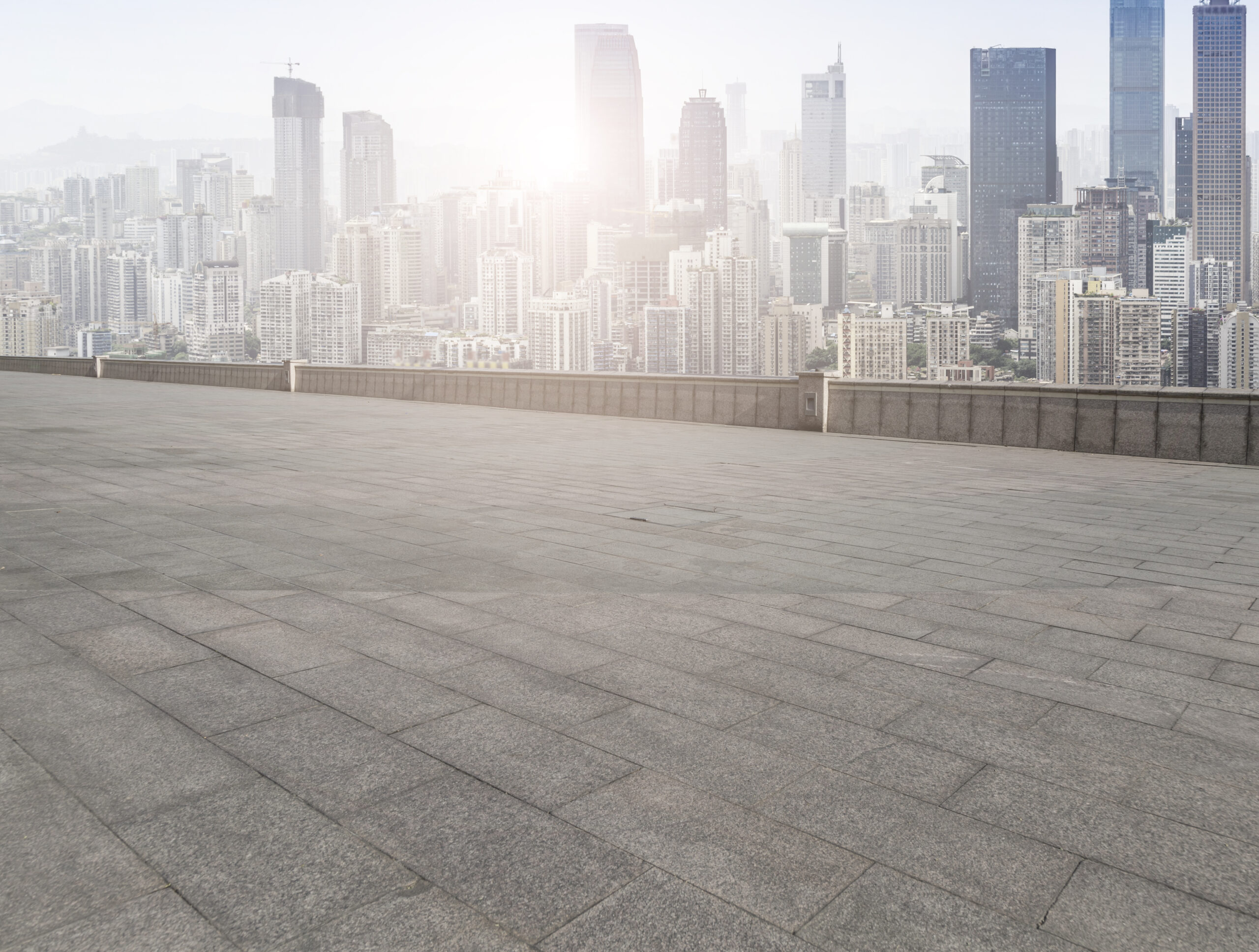Let’s face it, folks – a wonky concrete floor can be a real eyesore (and a tripping hazard!). Whether it’s your basement floor that’s developed a mind of its own, or your patio’s decided to play a perpetual game of “slide,” uneven concrete can be a real pain. But fear not, fellow New Yorkers! There are ways to level a concrete floor that slopes, and we’re here to break it down for you.
First Things First: Why Did My Concrete Floor Slope Anyway?
Before we jump into solutions, let’s talk about why your concrete might be a little “off-level.” Here are some common culprits:
- Settling: Over time, the soil beneath your concrete can settle unevenly, causing the concrete slab, to tilt.
- Improper Installation: Sometimes, mistakes happen during the pouring process, leading to an uneven surface from the get-go.
- Drainage Issues: If water isn’t draining properly away from your foundation, it can cause the soil to erode and lead to uneven settling.
How to Level a Concrete Floor That Slopes (DIY Approach)
Important Note: While this guide outlines a DIY approach to leveling a concrete floor that slopes, it’s crucial to understand that professional mudjacking is often the safest and most reliable solution. Mudjacking offers a longer-lasting fix with minimal disruption.
Safety First!
Before starting any work, ensure you have the proper safety gear, including gloves, safety glasses, a dust mask, and sturdy shoes.
Step 1: Assess the Slope and Damage
- Measure the extent of the slope using a level and a straightedge. Mark the high and low points.
- Check for cracks wider than ¼ inch. These might require additional repair before leveling.
Step 2: Determine the Cause of the Slope (Optional)
- Is the slope isolated to a specific area? Cracking near the foundation might indicate foundation settlement, requiring professional evaluation.
- Is the slope near a water source? Poor drainage could be the culprit. Consider redirecting water flow away from the concrete.
While a DIY solution focuses on leveling, identifying the cause can help prevent future issues. Here’s a basic assessment:
Step 3: Choose Your Leveling Method (DIY Options)
- Grinding: Suitable for very slight slopes. Rent a concrete grinder and slowly grind down the high spots. Wear proper dust protection!
- Self-leveling compound: This pourable concrete mix fills in low spots and creates a level surface. This method works best for small areas and requires careful preparation.
There are two main DIY approaches for leveling a minor slope (less than 1 inch):
Step 4: Prepare the Concrete Surface (For Both Methods)
- Thoroughly clean the concrete surface, removing dirt, debris, and any sealants that might hinder bonding.
- For self-leveling compound, ensure the concrete is damp but not soaked.
Step 5: Leveling with Grinding
- Wear ear protection and a dust mask while operating the grinder.
- Slowly and carefully grind down the high spots, following the level markings.
- Maintain a consistent grinding depth to avoid creating unevenness.
Step 6: Leveling with Self-Leveling Compound
- Follow the manufacturer’s instructions for mixing and pouring the compound.
- Typically, you’ll need to create a perimeter using a caulk or foam backer rod to contain the compound.
- Pour the compound slowly, starting from the farthest corner and working your way out. Use a smoothing tool to spread the compound evenly.
Step 7: Curing (For Both Methods)
- Allow the leveled area to cure completely according to the specific material instructions.
- Grinding typically requires no curing time. The self-leveling compound might require covering the area with plastic to prevent moisture loss.
Limitations of DIY Solutions:
- DIY methods might not be suitable for significant slopes or unevenness.
- Grinding can be time-consuming and physically demanding for large areas.
- Self-leveling compound might not be strong enough for structural support and could crack over time.
Considering Professional Mudjacking:
For a more permanent and reliable solution, especially for larger slopes or uneven concrete, consider professional mudjacking. Here are the advantages:
- Effective for larger slopes and unevenness
- Minimal disruption to surrounding areas
- Long-lasting and structurally sound repair
- Expert assessment to identify the cause of the slope
While DIY methods can address minor slopes, professional mudjacking offers a more comprehensive and long-term solution. Weigh the project scope, your comfort level, and your desired outcome before deciding on the best approach for leveling your concrete floor.
Cheapest Way to Level a Concrete Floor? Not Always the Best Way
We know what you’re thinking: “Alright, spill the beans! What’s the cheapest way to level a concrete floor that slopes?” Look, there are some DIY methods out there, but here’s the thing: they often don’t provide a long-lasting solution, and some can even damage your concrete further.
Think of it like this: you wouldn’t put a Band-Aid on a broken bone, right? Uneven concrete needs a strong and lasting fix. That’s where professional mudjacking comes in!
Mudjacking: The Long Island, Brooklyn, and Queens Champion for Level Floors
Mudjacking is a proven and effective technique specifically for how to level a concrete floor that slopes. Here’s how it works:
- Small holes are drilled strategically into the uneven concrete.
- A special mud slurry (a mix of cement, sand, and sometimes other materials) is pumped under the slab.
- The slurry fills the voids beneath the concrete, lifting it back to its original level.
Mudjacking is a minimally invasive process, meaning there’s minimal disruption to your surrounding areas. Plus, the mud slurry cures quickly, so you can get back to using your leveled floor in no time!
Bonus: Mudjacking Can Also Help With These Concrete Woes:
- Settling Driveways: Is your driveway looking more like a roller coaster than a parking spot? Mudjacking can fix that!
- Sunken Sidewalks: Uneven sidewalks are not only unsightly, but they can also be a safety hazard. Mudjacking can get them back on track.
- Cracked Slabs: Sometimes, uneven settling can lead to cracks in your concrete. Mudjacking can help stabilize the slab and prevent further cracking. (According to the American Concrete Institute [ACI], uncontrolled cracks wider than 1/4 inch can compromise the structural integrity of concrete slabs [ACI 360R]).
The Mudjacking Contractors: Your Local Leveling Experts
Here at The Mudjacking Contractors, we’ve been leveling concrete floors in Long Island, Brooklyn, and Queens for over [Number] years. We’re a family-owned business that takes pride in providing our neighbors with high-quality, long-lasting solutions for how to level a concrete floor that slopes.
Ready to ditch the wonky floor and embrace a level life? Contact The Mudjacking Contractors today for a free consultation! We’ll assess your situation and recommend the best course of action to get your concrete floor back in tip-top shape.
P.S. Remember, a leveled concrete floor doesn’t just look better, it also adds value to your property and eliminates potential safety hazards. So, don’t wait any longer – get your quote today!

